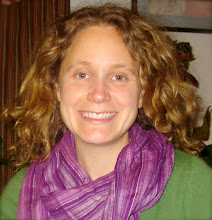~ Conclusive scientific evidence that routine (and by routine I mean scanning to see baby's position at every prenatal in the last weeks of pregnancy, or 3-D ultrasounds to "meet your baby" in the womb) use of ultrasounds are safe does not exist. Its use is very familiar to the use of X-rays. 50 years went by assuming that X-rays were safe for pregnant women before hard lessons were learned. A textbook on prenatal care published in 1937 has this to say about X-rays: "It has been frequently asked whether there is any danger to the life of the child by the passage of X-rays through it; it can be said at once there is none if the examination is carried out by a competent radiologist or radiographer".
In 1978 that same textbook, after seeing the dangers of X-raying babies, revised its stance: "It is now known that the unrestricted use of X-rays through the fetus caused childhood cancer".
This mimics the current textbook view on ultrasounds: "One of the great virtues of diagnostic ultrasound has been its apparent safety. At present energy levels, diagnostic ultrasound appears to be without injurious effect ... all the available evidence suggests that it is a very safe modality".
~ Lancet, A current British medical journal, has this to say about Ultrasounds: "There have been no randomized controlled trials of adequate size to assess whether there are adverse effects on growth and development of children exposed in utero to ultrasound. Indeed, the necessary studies to ascertain safety may never be done, because of lack of interest in such research".
~ The output of ultrasound plays a huge part in the affects on baby, however there are no controls in place as to what is a safe amount even though low outputs have been shown to be just as effective as high outputs.
~The skill of the technician performing the ultrasounds matters tremendously, yet there is no licensing or certification process for operators of the machines.
~Training midwives and doctors in the skills of palpation - using their own hands to feel baby's position is just as effective as a machine. Not only is this low-tech and inexpensive, it also helps care giver and mom physically connect.
As an aside: I had a friend tell me of someone she knows who has gone through 2 pregnancies and the first time a care giver ever even touched her belly was well into the 2 pregnancy! I haven't heard anything sadder since then in awhile.
Ask Ask Ask your caregiver why they are requesting an ultrasound. Ask what are the risks of an ultrasound. Ask what research their answer is based on. And then ask what are the risks of not getting an ultrasound. You may be surprised at the answers.

No comments:
Post a Comment